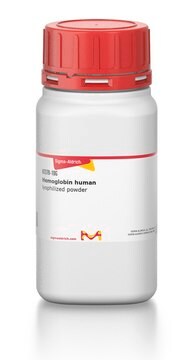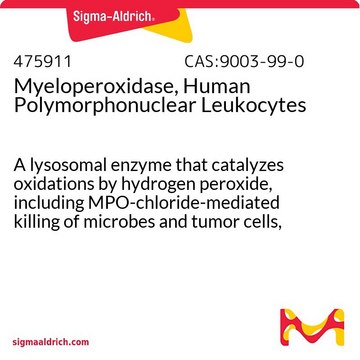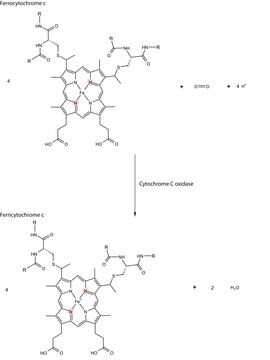A3672
Azurin
from Pseudomonas aeruginosa, lyophilized powder
About This Item
Produits recommandés
Source biologique
Pseudomonas aeruginosa
Niveau de qualité
Forme
lyophilized powder
Composition
Protein, ≥65% Lowry
Concentration
≥65.0% (Lowry)
Technique(s)
toxicology assay: suitable
Solubilité
water: soluble 1—1.1 mg/mL, clear, blue (light blue to blue)
Numéro d'accès UniProt
Température de stockage
−20°C
Informations sur le gène
Pseudomonas aeruginosa ... AZU(878046)
Vous recherchez des produits similaires ? Visite Guide de comparaison des produits
Description générale
Application
- in the cytotoxicity and cell viability studies in human osteosarcoma cell line
- for the functionalization of silicon nitride cantilevers for interaction studies
- for coating gold surface and insulating functionalized oxide surfaces of silicon oxide and mica
Actions biochimiques/physiologiques
Forme physique
Code de la classe de stockage
11 - Combustible Solids
Classe de danger pour l'eau (WGK)
WGK 3
Point d'éclair (°F)
Not applicable
Point d'éclair (°C)
Not applicable
Équipement de protection individuelle
Eyeshields, Gloves, type N95 (US)
Certificats d'analyse (COA)
Recherchez un Certificats d'analyse (COA) en saisissant le numéro de lot du produit. Les numéros de lot figurent sur l'étiquette du produit après les mots "Lot" ou "Batch".
Déjà en possession de ce produit ?
Retrouvez la documentation relative aux produits que vous avez récemment achetés dans la Bibliothèque de documents.
Notre équipe de scientifiques dispose d'une expérience dans tous les secteurs de la recherche, notamment en sciences de la vie, science des matériaux, synthèse chimique, chromatographie, analyse et dans de nombreux autres domaines..
Contacter notre Service technique








